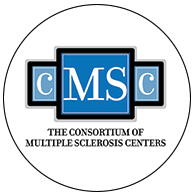Researchers may have figured out how to use information from these imaging tests to determine what type of multiple sclerosis may develop after an initial attack.
Researchers have apparently found a way to help predict multiple sclerosis disease progression one year after an initial attack.
Magnetic resonance imaging scans (MRIs) have long been used to assist in diagnosing multiple sclerosis (MS).
But now these tests are providing information that can tell experts what type of MS a patient may get, if any.
Experts say that by using the first MRI after the presentation of disease and determining location, length, and numbers of lesions, they created a feasible way to predict whether a patient will have more attacks.
They can also gauge whether a person’s disease will turn into relapsing MS or progressive MS.
“MS treatments have a price and side effects can be serious,” said Dr. Noam Bosak, part of the research group and a physician in the neurology department of Rambam Health Care Campus in Haifa, a 1,000-bed academic hospital serving more than 2 million residents of northern Israel. “We wish to help healthcare professionals and patients make better decisions together.”
Researchers have apparently found a way to help predict multiple sclerosis disease progression one year after an initial attack.
Magnetic resonance imaging scans (MRIs) have long been used to assist in diagnosing multiple sclerosis (MS).
But now these tests are providing information that can tell experts what type of MS a patient may get, if any.
Experts say that by using the first MRI after the presentation of disease and determining location, length, and numbers of lesions, they created a feasible way to predict whether a patient will have more attacks.
They can also gauge whether a person’s disease will turn into relapsing MS or progressive MS.
“MS treatments have a price and side effects can be serious,” said Dr. Noam Bosak, part of the research group and a physician in the neurology department of Rambam Health Care Campus in Haifa, a 1,000-bed academic hospital serving more than 2 million residents of northern Israel. “We wish to help healthcare professionals and patients make better decisions together.”
Bosak explained how after an initial demyelinating attack, a person could have no more activity, a diagnosis known as clinically isolated syndrome (CIS).
Or they might progress to an MS diagnosis.
Researchers have apparently found a way to help predict multiple sclerosis disease progression one year after an initial attack.
Magnetic resonance imaging scans (MRIs) have long been used to assist in diagnosing multiple sclerosis (MS).
But now these tests are providing information that can tell experts what type of MS a patient may get, if any.
Experts say that by using the first MRI after the presentation of disease and determining location, length, and numbers of lesions, they created a feasible way to predict whether a patient will have more attacks.
They can also gauge whether a person’s disease will turn into relapsing MS or progressive MS.
“MS treatments have a price and side effects can be serious,” said Dr. Noam Bosak, part of the research group and a physician in the neurology department of Rambam Health Care Campus in Haifa, a 1,000-bed academic hospital serving more than 2 million residents of northern Israel. “We wish to help healthcare professionals and patients make better decisions together.”
Bosak explained how after an initial demyelinating attack, a person could have no more activity, a diagnosis known as clinically isolated syndrome (CIS).
Or they might progress to an MS diagnosis.
“It can sometimes take 12 months for a doctor and patient to make a decision on treatment,” she told Healthline.
By categorizing lesions based on size and location, the MRI can help show which kind of treatment may work best and when it’s needed.
“Some patients will need more aggressive treatments while others will do well on a more relaxed follow-up program,” Bosak said. “This is a unique study focusing on the first year.”
What the study uncovered
The study took patients with one clinically isolated attack and measured their brain lesions with an MRI at time of attack and at intervals during the first year.
One year after the first MRI, 54 percent of the patients had progressed to MS.
Researchers concluded that patients with lesions that were temporal, occipital, or perpendicular to the corpus callosum at the first episode were more likely to have a recurrence.
Those patients with a combination of more than 13 lesions, with maximal lesion length greater than 0.75 cm, and a lesion perpendicular to the corpus callosum, had a 19 times higher chance of conversion MS during the following year.
Researchers have apparently found a way to help predict multiple sclerosis disease progression one year after an initial attack.
Magnetic resonance imaging scans (MRIs) have long been used to assist in diagnosing multiple sclerosis (MS).
But now these tests are providing information that can tell experts what type of MS a patient may get, if any.
Experts say that by using the first MRI after the presentation of disease and determining location, length, and numbers of lesions, they created a feasible way to predict whether a patient will have more attacks.
They can also gauge whether a person’s disease will turn into relapsing MS or progressive MS.
“MS treatments have a price and side effects can be serious,” said Dr. Noam Bosak, part of the research group and a physician in the neurology department of Rambam Health Care Campus in Haifa, a 1,000-bed academic hospital serving more than 2 million residents of northern Israel. “We wish to help healthcare professionals and patients make better decisions together.”
Bosak explained how after an initial demyelinating attack, a person could have no more activity, a diagnosis known as clinically isolated syndrome (CIS).
Or they might progress to an MS diagnosis.
“It can sometimes take 12 months for a doctor and patient to make a decision on treatment,” she told Healthline.
By categorizing lesions based on size and location, the MRI can help show which kind of treatment may work best and when it’s needed.
“Some patients will need more aggressive treatments while others will do well on a more relaxed follow-up program,” Bosak said. “This is a unique study focusing on the first year.”
What the study uncovered
The study took patients with one clinically isolated attack and measured their brain lesions with an MRI at time of attack and at intervals during the first year.
One year after the first MRI, 54 percent of the patients had progressed to MS.
Researchers concluded that patients with lesions that were temporal, occipital, or perpendicular to the corpus callosum at the first episode were more likely to have a recurrence.
HEALTHLINE PARTNER SOLUTIONS
New Clinical Trial for UI Due to Multiple Sclerosis
If you or a loved one experience involuntary urine leakage due to MS, new options may be available. A new trial is testing if an approved medication helps alleviate symptoms.
Those patients with a combination of more than 13 lesions, with maximal lesion length greater than 0.75 cm, and a lesion perpendicular to the corpus callosum, had a 19 times higher chance of conversion MS during the following year.
There were only 46 patients in the study, but experts say the results are revealing.
“This small study adds to the literature of MRI studies which suggest the utility of specific MRI parameters as prognostic indicators,” said Dr. Barbara Giesser, professor of clinical neurology at the David Geffen School of Medicine at the University of California at Los Angeles and clinical director of the UCLA MS program.
“What people are trying to accomplish is to diagnose as early as possible,” added Bruce Bebo, executive vice president of research at the National Multiple Sclerosis Society. “The earlier we treat [MS], the better the outcomes. We know that.”
“This work is part of a whole series of people around the world to discover who’s at high risk to get MS. And to have the confidence to treat these patients before they get MS,” Bebo told Healthline.
He added that experts are looking for anything that gives confidence in diagnosing MS as early as possible with tools such as MRI and biomarkers.
“It was a fine study, intriguing, interesting, and adds to what we know about the imaging factor, but it’s not actionable yet,” Bebo said. “It was a pretty small number of participants, but it’s a clue. A hypotheses-generating study would need to be pursued by larger groups and people to use it as prognostic tool.”
How MRIs are used now
Today, neurologists can use MRIs, clinical history, and examinations to start to get a sense for those with CIS and to separate those with higher and lower risk for developing MS.
“Neurologists can then decide if they’re willing to treat CIS if factors like imaging and history are adding up to high risk category,” explained Bebo.
MRIs are increasingly used with confidence in helping healthcare providers and patients determine a course of action in treatment.
In 2017, the Consortium of MS Centers created new guidelines on how to best use MRIs in the MS diagnosis and follow-up processes.
“Most interesting, most important thing, I found is clearly practical,” concluded Bosak, “It gives us a tool to make decisions about DMTs [disease modifying therapies] for patients.”
The biggest question regarding MS treatment is how to attack it correctly from day one.
“One wouldn’t make a decision based on this information, but it gives a direction.” Bosak said. “We need a larger study to make it a better clinical tool.”
Editor’s note: Caroline Craven is a patient expert living with MS. Her award-winning blog is GirlwithMS.com and she can be found on Twitter.
By Caroline Craven












